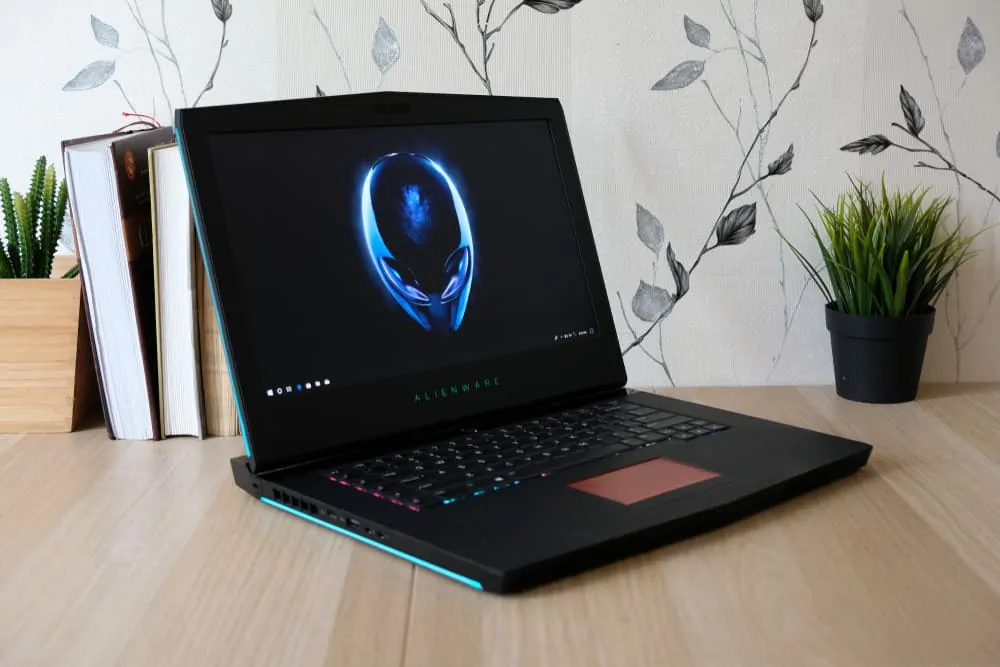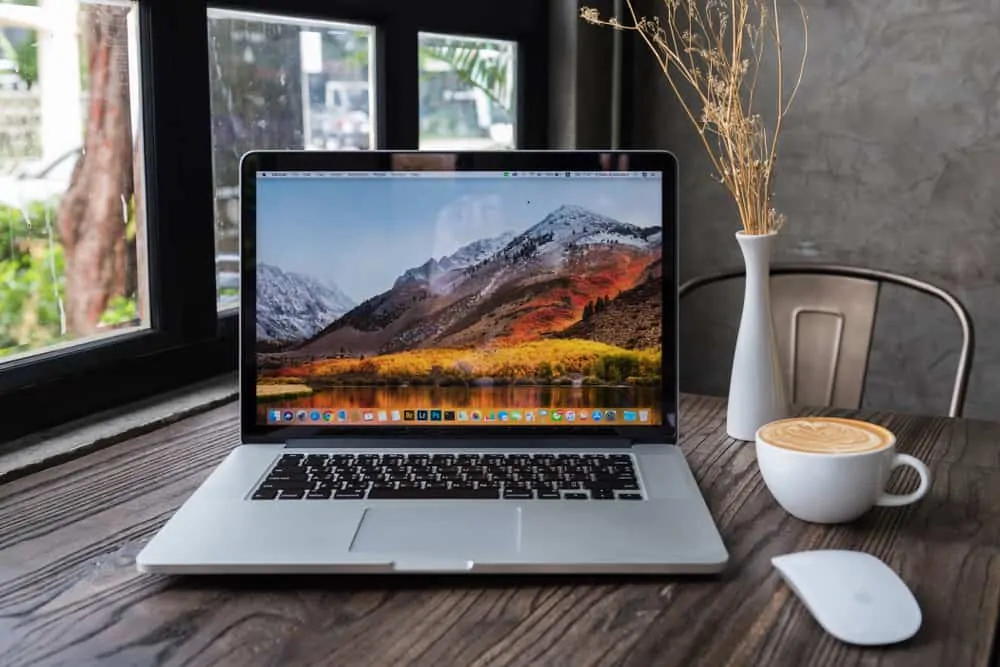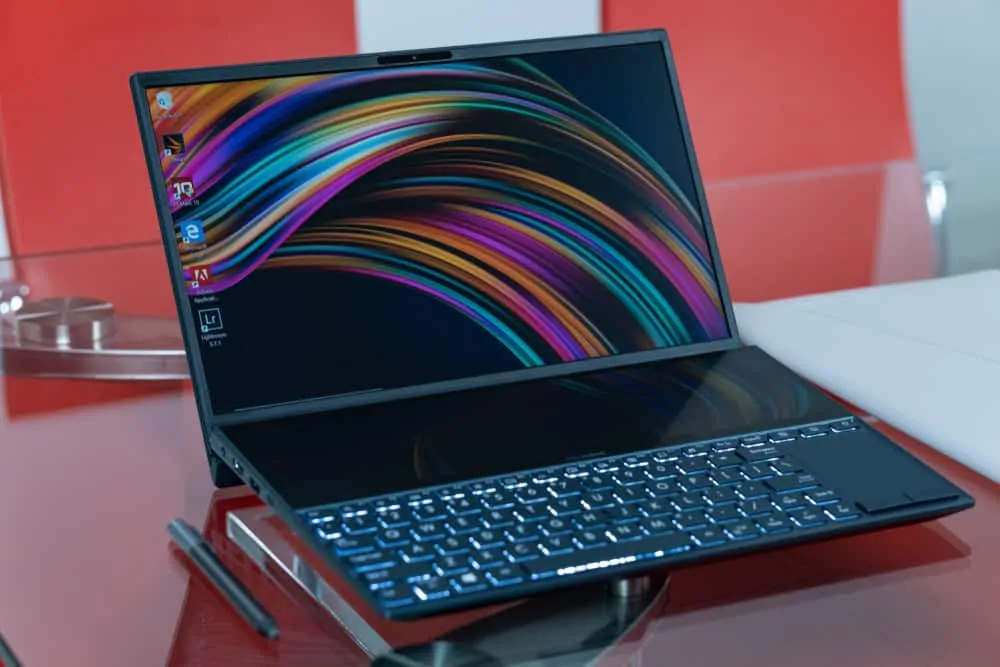This Itechguide is a pick of the 5 best laptops for music production with the best on top of the list.
Best Laptop for Music Production Specs Summary
| S/N | Best Laptop for Music Production List | Dimension /Weight | Processor Specs | Memory Specs | Storage Specs | Graphics Specs |
|---|---|---|---|---|---|---|
| 1 | Apple MacBook Pro | 344.72 x 230.14 x 18 mm/2005 g | Up to Intel Core i9-9980HK | Up to 64 GB 2666MHz DDR4 | 512 GB SSD, or upgrade to 8 TB SSD | Up to AMD Radeon Pro 5600M |
| 2 | Dell XPS 15 | 320.3 x 215.6 x 14.5 mm/1350 g | Up to Intel Core i9-10885H | Up to 64 GB 2666MHz DDR4 | 256 GB SSD, upgrade to 2 TB | Up to NVIDIA GeForce GTX 1650 Ti |
| 3 | HP x360 Pavillion | 356 x 251 x 17.9 mm/2010 g | Intel Core i7-8550U | 16 GB DDR4, upgrade to 32 GB | 1 TB PCIe NVMe M.2 SSD | NVIDIA GeForce MX150 |
| 4 | ASUS ROG Strix SCAR III G531 | 359.9 x 275 x 24.8 mm/2571. 8 g | Up to Intel Core i9-9880H | Up to 16 GB DDR4-2666 SO-DIMM, | Up to 1 TB M.2 NVMe PCIe 3.0 SSD | Up to NVIDIA GeForce RTX 2070 |
| 5 | Microsoft Surface Pro 7 | 292 x 201 x 8.5 mm/2571. 8 g | Up to Intel Core i7-1065G7 | 4 GB LPDDR4x , upgrade to 16 GB | 1 TB SSD | Up to Intel Iris Plus Graphics 650 |
To compare all the laptops on Amazon click compare music production laptops on Amazon (link opens on a new browser tab).
In the remaining part of this article, we have listed our best laptop for music production in order of performance. We also provide an overview of the specs of each laptop.
Apple MacBook Pro
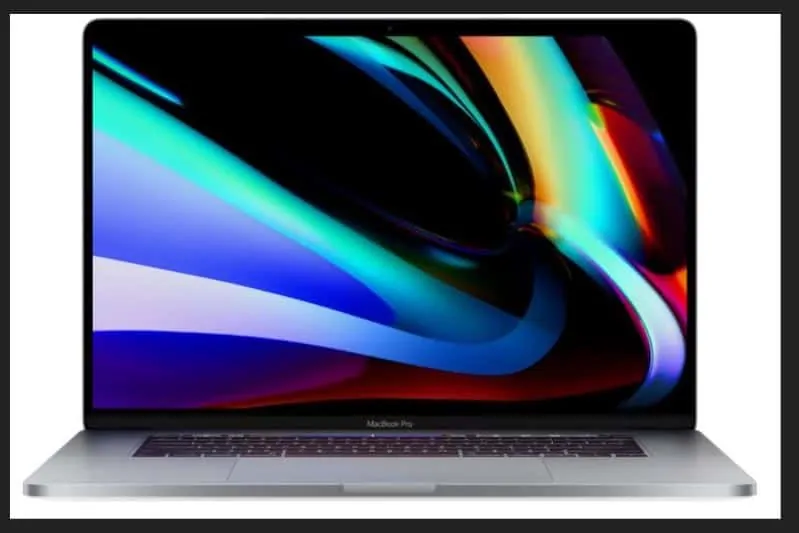
At no 1 in my pick of the best laptop for music production is “Apple MacBook Pro”.
This product is a masterpiece from a popular brand with amazing features for the topmost performance. It also offers a smart keyboard, touch ID, and a smooth touch trackpad.
Design Review
This Apple MacBook Pro model offers a world-class design. Its clear-cut body and smart look make the MacBook one of the most sort after laptops.
Moreover, the laptop offers a six-speaker sound system with force-canceling woofers. With the six-speaker sound system, the laptop delivers clear bass sounds with minimal distortions.
Furthermore, the Apple Macbook Pro weighs 2000 g and has a 357.9 X 245.9 X 16.2 mm dimension. If you want the laptop in your studio or move a lot to clubs, the Macbook Pro’s weight will make a great travel companion.
Additionally, this MacBook Pro model has a 20% better thermal rating than the previous models of the Macbook. This feature improves the laptop’s capacity to handle longer and tasking music productions efficiently without overheating.
In comparison, Apple Macbook Pro weighs less than the Dell XPS 15 – the second laptop on my list. Dell XPS 15 weighs 2005 g.
Finally, Apple Macbook Pro comes with four Thunderbolt 3 ports. These ports offer faster connection speeds and are useful for superior music production gears like the UAD Apollo.
Processor Specs Review
The laptop offers several processor configurations. It comes with Intel Core i7-9750H or up to Intel Core i9-9980HK processor.
Any of these processors can perfectly manage DAW applications seamlessly. Most especially, the Intel Core i9-9980HK with 8 cores and a max frequency of 5.0 GHz is powerful for music productions.
Regarding processor performance, Apple MacBook Pro is extensively great. However, the laptop falls below the computing power of the Dell XPS 15’s Intel Core i9-10885H processor that has a max frequency of 5.30 GHz.
Notwithstanding, this MacBook processor performance is remarkably great for music recording and productions.
Memory Specs Review
The Apple Macbook Pro comes with 16 GB MHz DDR4 onboard memory. However, you can get the model with 32 GB or 64 GB memory.
With the standard 16 GB memory, the laptop is capable of handling several recording operations at once. However, 32 GB or 64 GB will provide faster recording operations.
Furthermore, in our detailed review of the Apple Macbook Pro, the laptop performed flawlessly when running Adobe Premiere Pro. Also, the laptop ran the Android studio smoothly without lagging.
In conclusion, even with its lowest RAM configuration of 16 GB, Apple MacBook Pro memory performance is more than capable for music productions.
Storage Specs Review
The base model of the Apple Macbook Pro comes with a 512 GB SSD. However, the laptop offers different storage configurations.
The laptop storage upgrade ranges from 1 TB to 2TB, 4 TB, and 8 TB SSD. For music production, we recommend at least 1 TB. This will give you more space to save as many music files as possible.
Besides, the more you upgrade your DAW (digital audio workstation) software, the larger the applications. Therefore, big storage size is required for music production.
By comparison, Apple Macbook Pro offers a bigger storage capacity than the HP Spectre x360 and Dell XPS 15 laptops.
Specifically, the Dell XPS 15 offers a maximum storage size of 2 TB SSD, while HP Spectre x360 offers a maximum of 1 TB SSD. In comparison, the Apple MacBook Pro offers up to 8 TB SSD storage!
Graphics Card Specs Review
Apple Macbook Pro features an AMD Radeon Pro 5300M and Intel UHD Graphics 630, with automatic switching technology.
With the two graphics cards, the operating system can switch the graphics output of your laptop between both graphics cards. This saves the battery life of your MacBook.
However, you can turn this feature off in the laptop’s settings – allowing the AMD Radeon Pro 5300M to get the priority.
Furthermore, you can upgrade the dedicated graphics card to AMD Radeon Pro 5500M or AMD Radeon Pro 5600M.
Any of the dedicated graphics cards offer better performance. Moreover, in our complete review of the Apple Macbook Pro, the laptop impressively runs PUBG and Fortnight at about 60 FPS on moderate settings.
With the exceptional graphics performance of this laptop, it will work well with the graphics requirements of any music recording and production software.
Similarly, comparing graphics specs, Dell XPS 15 runs Fortnight at 60 FPS but on maximum settings. Hence, Apple Macbook Pro is slightly below the Dell XPS 15 graphics performance.
Nonetheless, Apple Macbook Pro graphics cards are excellent for music producers, creators, and video editors. If you want this laptop for music production, it is more than capable.
Dell XPS 15
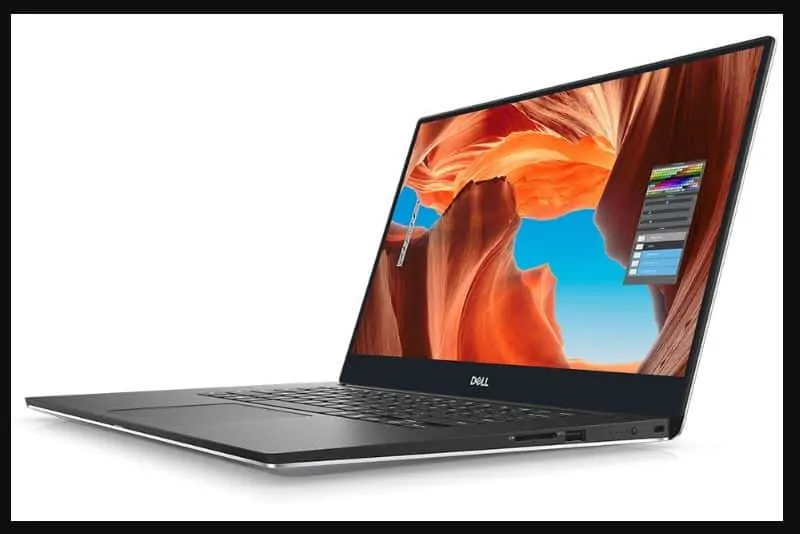
“Dell XPS 15” comes at no 2 in my pick of the best laptop for music production.
“Dell XPS 15” offers a 4K Ultra HD touchscreen display. It also has a prominent modern design that delivers exceptional performance.
Design Review
Dell XPS 15 comes with an even cut-out aluminum chassis. Furthermore, it offers thinner bezels with well fitted improved keyboard and trackpad.
Moreover, the laptop weighs 2005 g and measures 344.72 x 230.14 x 18 mm. The size of the laptop is on a moderate level and can easily be moved from one location to another.
Furthermore, Dell XPS 15 offers a 15-inch full HD or 4K UHD touch display with anti-reflection. You get a vivid display with minimal light reflections.
Another important aspect of the Dell XPS 15 to consider is its port options. It offers a USB 3.1 port and 2 lightning-fast Thunderbolt 3 ports.
Additionally, the laptop has an SD card slot and a headphone jack. Set side by side, Dell XPS 15 has better port options than Microsoft Surface Pro 7 (the 5th laptop on my list).
Microsoft Surface Pro 7 has just 2 USB ports with no headphone jack.
Processor Specs Review
Dell XPS 15 offers up to 4 different processor options. It ranges from the Intel Core i5-1030H to Intel Core i7-10750H, Intel Core i7-10875H, and Intel Core i9-10885H.
The processor options are powerful models that are suitable for music productions at every level. Moreover, in our Dell XPS 15‘s detailed review, the laptop has a top Geekbench 4 test score of 25,934.
A high Geekbench 4 score indicates excellent processor performance. The implication is that using this laptop for music products should be fast without any stutter.
Furthermore, Dell XPS 15 scored 3,560 in the Cinebench R20 test. Both tests prove that Dell XPS 15 has remarkable processor performance.
If you are a pro music producer, you need this powerful laptop.
Memory Specs Review
The laptop comes with a standard memory of 8 GB DDR4. You can further upgrade the memory to 16 GB, 32 GB, or 64 GB DDR4.
Though the 8 GB will be enough for standard music production, however, with 16 GB or more, the laptop will deliver the utmost performance.
Besides, our Dell XPS 15‘s full review revealed that the laptop runs several tasks at once without stuttering. For instance, Dell XPS 15 managed three programs while streaming on Soundcloud with 30 chrome tabs opened.
In conclusion, Dell XPS 15‘ big memory option is ideal for music productions.
Storage Specs Review
Dell XPS 15 offers a 2 TB SSD with an extra storage option via the SD card slot.
With the 2 TB, the laptop is more than adequate to accommodate several DAW and VST software. Besides, the popular music software Ableton live 10 requires about 60 GB of storage space.
Hence, Dell XPS 15 storage size is perfect for music production. Additionally, the solid-state drive (SSD) offers a faster transfer rate compared to hard disk drives.
For instance, in our extensive review of the laptop, it copied 4.98 GB of multimedia files in just 8 seconds at a transfer rate of 710.3 MBps. This shows you can big music files at a much faster rate.
Overall, Dell XPS 15 is better and efficient than most competitive laptops on the list.
Graphics Specs Review
Dell XPS 15 offers two graphics card options. You can get the laptop with the integrated Intel UHD Graphics or dedicated NVIDIA GeForce GTX 1650 graphics card.
In most cases, when considering a laptop for music production, the graphics card specs are not a big deal. However, the graphics card options for this laptop meet the graphics requirement of DAW software.
In contrast, Apple MacBook Pro offers more powerful graphics cards than the Dell XPS 15. Nevertheless, Dell XPS 15 graphics specs are capable of music productions.
HP Spectre x360
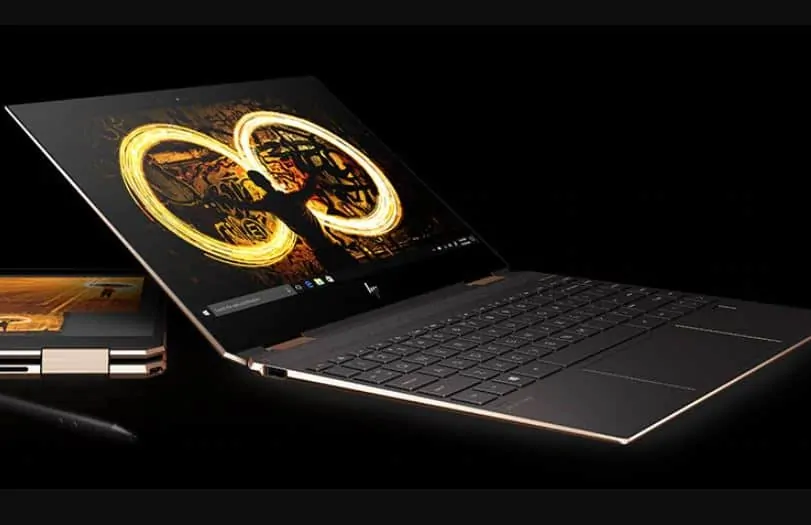
“HP Spectre x360” is no 3 in my pick of the best laptop for music production.
The laptop offers an excellent 2-in-1 convertible design with a great finish. It also has an incredible 17hrs of battery life.
Design Review
HP Spectre x360 offers a top-of-the-line build quality. With its convertible design, you can use the laptop as a tablet as well.
Speaking of size, the laptop weighs 2010 g and has a dimension of 356 x 251 x 17.9 mm. The laptop weighs more than the Apple Macbook Pro laptop that weighs 2000 g.
However, the HP Spectre x360 is compactly designed for easy handling. Therefore, working with the laptop in your studio, home, or club will be convenient.
Furthermore, the laptop offers 1 USB 3.1 Type-C port, an HDMI port, and 1 headphone jack. With the USB port or headphone jack, you can connect to external devices like sound controllers, or a headset.
Also, the laptop offers a Thunderbolt 3 port which can be useful for some advanced peripherals. Hence, the HP Spectre x360 is an all-round superb laptop for music production.
Processor Specs Review
HP Spectre x360 comes with a 4-core Intel Core i7-8550U. The processor offers a base frequency of 1.8 GHz and a max frequency of 4.0 GHz.
The computing power of the processor is sufficient for music production. However, HP Spectre x360 processor performance is way below the Dell XPS 15 and Apple Macbook Pro laptops.
However, even though its processor performance is lower that the first 2 laptops in my list, HP Spectre x360 is more than capable to handle various music production software.
Memory Specs Review
The laptop offers a standard memory size of 16 GB. The memory is best fitted to run the DAW and other music production software.
Moreover, you have the option to upgrade the memory up to 32 GB. With this memory size, the laptop operates in an incredible performance when producing music.
In contrast, laptops like the Dell XPS 15 offer more memory upgrade options than HP Spectre x360.
Notwithstanding, HP Spectre x360 memory specs are above the average music-producing laptops.
Storage Specs Review
HP Spectre x360 offers a massive storage size of 1 TB PCIe NVMe M.2 SSD. Moreover, with the solid-state drive, you get a faster transfer rate compared to HDD.
Furthermore, the 1 TB SSD laptop is enough to save big media files. However, if you have big music projects, you can get an external USB storage.
Overall, the storage size of HP Spectre x360 is considerably huge. Besides, you get an extra slot for a microSD media card.
However, if you seriously need a laptop with massive storage, you can get the Apple Macbook Pro model with 4 TB or 8 TB SSD.
Graphics Specs Review
HP Spectre x360 is equipped with a dedicated NVIDIA GeForce MX150 with 2 GB GDDR5 VRAM.
Though dedicated graphics work better than integrated graphics cards, the NVIDIA GeForce MX150 is a mid-range graphics card.
Nonetheless, this graphics card is absolutely suitable for music productions.
Asus ROG Strix Scar III G531GW Gaming Laptop
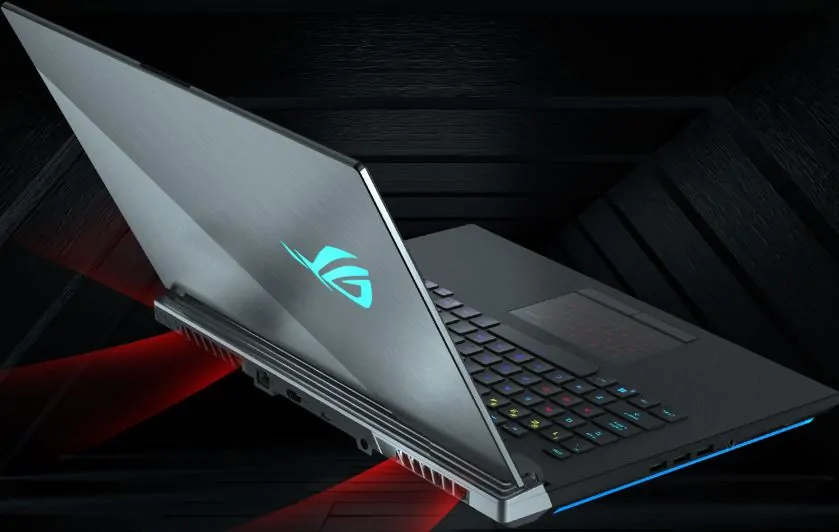
“Asus ROG Strix Scar III” is no 4 in my pick of the best laptop for music production.
This laptop has some amazing features. As you may know already, Asus ROG Strix Scar III is built for gaming. Hence, it offers a robust design for flawless performance.
Even though Asus ROG Strix Scar III is a gaming laptop we added it to our best laptop for music production list because of its specs.
In the following sub-sections, I have outlined these features and how they will work well for music producers.
Design Review
ASUS ROG Strix Scar III G531GW offers a solid build quality that fits its gaming accolades. It also offers an amazing display refresh rate of up to 240 Hz.
Moreover, to stabilize its image processing performance, the laptop offers a response time of 3ms. Focusing on music production, the laptop has the backbone to take on any music production requirements.
Furthermore, ASUS ROG Strix Scar III has a weight of 2571.8 g and a dimension of 359.9 x 275 x 24.8 mm.
Regrettably, the laptop is the heaviest on my list, next to the HP Spectre x360 that weighs 2010 g. For the best experience, you can have the laptop stationed in one location.
Overall, ASUS ROG Strix Scar III is a top-range laptop with remarkable qualities.
Processor Specs Review
The laptop offers two processor options. It comes with either Intel Core i7-9750H, or Intel Core i9-9880H.
The processor options are exceedingly great in handling the most advanced DAW or VST applications. Taking the specs of the Intel Core i9-9880H, the processor offers a base frequency of 2.40 GHz and a max frequency of 4.80 GHz.
Comparably, ASUS ROG Strix Scar III processor computing power beat the HP Spectre x360’s processor. In conclusion, ASUS ROG Strix Scar III processor performance is outstanding for music productions.
Memory Specs Review
The laptop offers a memory size of 8 GB or 16 GB. Either of the memory sizes increases the laptop’s capacity to manage multiple tasks simultaneously.
However, bear in mind that a bigger memory size performs better than smaller sizes. Hence, the 16 GB is most preferable and recommended for swift music productions.
In comparison with other laptops on my list, ASUS ROG Strix Scar III fails to offer big memory upgrade options like Dell XPS 15. The Dell XPS 15 laptop offers memory upgrade options of up to 64 GB.
Nonetheless, ASUS ROG Strix Scar III G531GW memory options are capable of running music production software.
Storage Specs Review
The ASUS ROG Strix Scar III G531GW offers two storage configurations. You can get 1 TB 5400RPM 2.5″ SATA FireCuda SSHD, or 1 TB M.2 NVMe PCIe 3.0 SSD.
Each of the storage options is great in size. However, out of the two storage drives, the solid-state drive (SSD) offers better performance in terms of transfer rate.
Moreover, the solid-state drive can increase music recording speed and offer a better overall user experience. Therefore, it is advisable that you go for the model with 1 TB M.2 NVMe PCIe 3.0 SSD.
Comparing the storage size of ASUS ROG Strix with some of the other laptops on my list, the ASUS ROG Strix Scar III lags way behind. For example, its storage size is half the size offered by Dell XPS 15.
Dell XPS 15 offers up to 2 TB SSD.
Graphics Specs Review
ASUS ROG Strix Scar III offers multiple graphics card options. The base graphics card option is the NVIDIA GeForce GTX 1660Ti.
Furthermore, you can get the laptop with NVIDIA GeForce RTX 2070 or NVIDIA GeForce RTX 2060 graphics card.
Like I said in other sections of this article, most DAW (digital audio workstation) applications are not graphics-intensive.
Hence, any of the graphics cards that come with this laptop is perfect for music production.
Microsoft Surface Pro 7
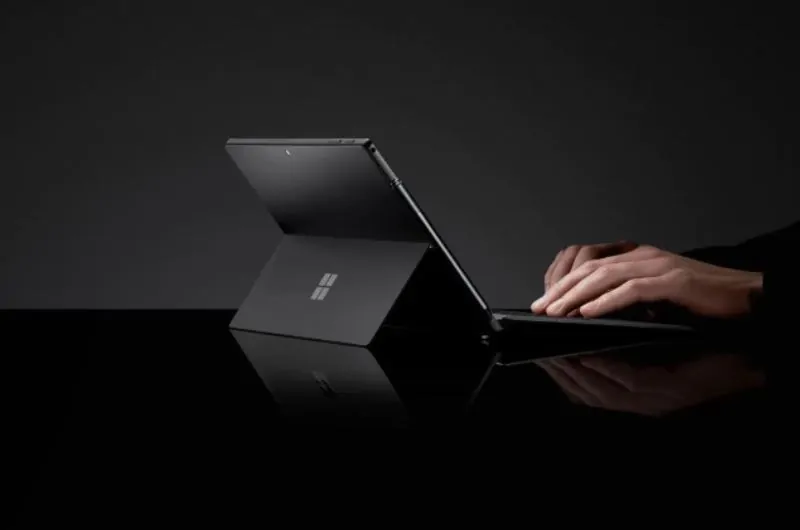
Coming 5th in my pick of the best laptop for music production is “Microsoft Surface Pro 7“.
“Microsoft Surface Pro 7” has a lot of attractive features. It offers a simplified design with a detachable feature to function as a tablet.
Design Review
Microsoft Surface Pro 7 is one of the latest models in the successful line of the Microsoft Surface laptops. It offers a unique design with touchscreen capability.
The laptop weighs 775 g or 790 g depending on the processor options. It also has a dimension of 292 x 201 x 8.5 mm.
In terms of weight, Microsoft Surface Pro 7 is remarkably lightweight. If you are a music producer that moves a lot, this laptop is the real deal.
Moving on, the laptop offers 1 USB Type-A port and 1 USB Type-C port. With the two USB port options, you can connect multiple audio peripherals to the laptop.
Processor Specs Review
Despite the small size of the Microsoft Surface Pro 7, it offers top-notch processor configurations. It comes with Intel Core i3-1005G1, Intel Core i5-1035G4, or Intel Core i7-1065G7.
The Intel Core i7-1065G7 is the processor with the highest computing power with 4 cores, 8 MB cache, and a max frequency of 3.90 GHz. From the specs details, the processor is powerful enough for music productions.
Overall, Microsoft Surface Pro 7 processor performance will get you through basic and several advanced DAW software.
Memory Specs Review
Microsoft Surface Pro 7 offers a standard memory size of 4 GB LPDDR4X. However, you can get a model with 8 GB or 16 GB.
The minimum memory size you should go for, as a music producer is 8 GB. However, you should put your money on the 16 GB memory size for faster music production performance.
In comparison, the laptop falls below the likes of the Apple MacBook Pro that offers 32 GB or 64 GB memory options.
Storage Specs Review
Like its processor, Microsoft Surface Pro 7 offers multiple storage configuration options. The highest you can get is the 1 TB SSD.
With the 1 TB storage size, the laptop has enough room for large media files and music recording applications.
In comparison to its competitors in my list, Microsoft Surface Pro 7 offers a similar storage size as the HP Spectre x360 and ASUS ROG Strix Scar III laptops.
However, the Dell XPS offers a massive 2 TB storage size. Even better is the Apple MacBook Pro’s 8 TB storage option.
Moving away from the differences, the 1 TB storage size is above the standard for music productions.
Graphics Specs Review
Microsoft Surface Pro 7 offers two integrated graphics cards depending on the processor options.
In any of the graphics cards, you can only get pleasing performance when producing music.
Finally, Microsoft Surface Pro 7 is the ideal choice for music producers who works both indoor and outdoor.
I hope you found this Itechguide pick helpful. If you did, click on “Yes” beside the “Was this page helpful” question below.
You may also express your thoughts and opinions by using the “Leave a Comment” form at the bottom of this page.
Finally, to read more gadget reviews, visit our Gadgets review page.
